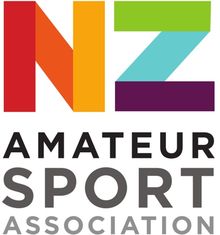Wellington's "Ghost" Clubs Part 2: St. Johnís, St. Davidís and St. Jamesís
Above: The St. James’s team of 1911, which came close to winning Wellington’s Senior Championship.
Wellington's "Ghost" Rugby Clubs†
Part 2 – “A Tale of Three Churches and Three Clubs” – St. John’s, St. David’s, St. James’s
Throughout our country’s young history, Rugby Union has often been irreverently referred to as “New Zealand’s official religion”. In many respects, the truth of this statement is stranger than its fictional basis, with many early Wellington rugby clubs based around religious communities.
In this regard, while the story of Wellington’s Roman Catholic (notably Marist) Clubs is reasonably well known, those of the equally prominent Protestant community appear to have been largely forgotten. In particular, the Presbyterian Church was notable for having three Clubs affiliated to the Wellington Rugby Union in the early 1900s, before World War One, based around church communities which had flourished in Petone, Te Aro and Newtown, following the settlement of Wellington by Scottish settlers in 1840.
The first of these was the St. John’s Football Club (based on the church community in Willis Street established in 1885). The Club was initially formed in 1893 following a meeting convened by George Troup, a future Mayor of Wellington. In the era before the 40-hour working week “it was pointed out that a number of the members would only be able to play on Wednesday afternoons, and so it was decided to elect two captains, one for Saturdays and one for Wednesdays.” The Club established relations with other Presbyterian communities around New Zealand, with a team from the Club travelling to Christchurch in April 1898, where they played the St. Paul’s Club, winning by 6 points to 3. In other notable achievements, the Club won the Charles Hill Cup named after the first President of the Oriental Club (a “hatter and hosier” from Lambton Quay) in the late 1890’s and also the Third-Grade Championship in 1908, the Club’s highest achievement. Following the conclusion of World War One, the Club continued to field a team in the Fourth-Grade until June 1921, when it withdrew from all competition.
St. David’s Football Club (based on the church community established at Britannia Street in Petone in 1889), was formed in 1905 and seems to have only survived for two seasons in the Fourth-Grade Championship, following which time it appears the Club (and its grounds which formed part of the current Petone Recreation Ground), were absorbed into the Petone Football Club.

However, the Club, which was the third of the trio, was the one which achieved greatest success and recognition over a 20-year period at the start of the last century. Over its history, this Club produced two All Blacks, a New Zealand League representative, one New Zealand Maori representative, two North Island representatives and sixteen Wellington Provincial Union representatives. As such, it was without a doubt, one of the most successful Wellington Clubs in the decade before World War One.
The St. James’s Football Club (colloquially known as “the Jimmies”) was formed in 1900, based around the church community of St. James Presbyterian Church established in 1899, at 235 Adelaide Road, in Newtown, opposite Wellington Regional Hospital. (The later congregation sold the church for $1.15 million in 2014).
The first 1900 team, which was reported to have been based on “lads belonging the choir”, comprised: Frank Alpe, H. Wilton, S. Wilton, J. Haslam, G. Warwick, Fred Alpe, F. Wright. B. Yuill, L. Baumgurt, G. Scott, H. Pitcher, Yuill, H. Wright. A. Wright, and H. Urquhart. They won their first game by 8 points to 6.
On 22 February 1901, the Club decided to affiliate with the Wellington Rugby Union, and entered a team for the Fourth-Grade Championship. Originally it was intended to wear black jerseys with yellow bands under the arms and round the chest, but a uniform of red and white stripes was adopted. The membership of the Club grew from 29 in 1900, to 69 in 1902, with a healthy 166 members by 1904. In 1903 St. James won the Third Grade Championship; in 1905, the Fifth Grade Championship; and in 1906, the Third, Fourth and Junior Grade Championships. In 1907, a proposal was received to merge with the “Southern Club” (representing St. Thomas’ Anglican Church), however this did not eventuate. Instead, St. James (the stronger of the two Clubs, with 140 members at this time) entered the Senior Championship for the first time, finishing fifth in the following year, with the local press noting that, under the coaching of former All Black, Henry Roberts (1884) whose son was a member of the Club and Captain of the team, “they were probably the best-trained team in the competition”. In 1909, the Club finished third overall, with a second-place finish achieved in 1910, the best result the Club ever achieved in Wellington’s senior competition.
For eight years from 1908 to 1914, St. James’s Club players regularly appeared in the Wellington Provincial Union team, with George Bradley (1910-11), J A Bruce (1909-10), G Cook (1911), William Crewes (1914), Arthur (Jack) Donaldson (1914), James M Ferguson (1907-08), Tarakitai Heketa (1913), Charles Hills (1909-12), C King (1910-11), Clarence Manning (1912), James (Jim) Edward Moffitt (1910-12), John Joseph O’Connor (1907), Edward James Roberts (1910-11), H Roberts (1909), Algernon (Algy) Thomas (1908-11) and C T Young (1912-13), all Wellington representatives.
In addition, E J Roberts (1913, 1914, 1920, 1921) and J E Moffitt (1920, 1921) were selected for the All Blacks, while Tai Heketa played for the New Zealand Maori team in 1913. J A Bruce represented the North Island (1909) as did E J Roberts and Moffitt. C T Young also represented Taranaki, while Bradley was a New Zealand League representative. (George Bradley was subsequently appointed Manager and Coach of the New Zealand Rugby League team in 1920.)
The first blow to the Club’s prestige and future came in 1913 when a number of players withdrew from the Club to pursue “the professional game” (rugby league), including Bradley and Donaldson.
In response to the threat posed to the Club, “the desire was expressed that all members would endeavour to maintain an amateur status, and assist the club to their utmost.”
World War One was then to herald the eventual downfall of the Club, with the number of players enlisting to fight having an impact from 1914 onwards, at which time the Club was reported to be at a “low ebb”. The Chairman noted that the Club should either go "on the rocks, and pull out," or “pull together and bring it up to the standard it occupied some years ago”. The “Club has reared up some of the finest players in New Zealand, and for this reason it should not die through lack of enthusiasm on the part of its members.” However, by August 1916, the die was cast, with 45 Club Member having enlisted to fight overseas. At the 1917 Annual General Meeting of the Club, the President noted that the club “suffered severely from loss of members owing to the war”, with the balance sheet showing a credit balance of a measly 13 shillings.
In an unexpected twist to the horror and sorrow of the Great War, Tai Heketa (a former Te Aute College student, who in 1912 married Helen, the younger sister of the Club’s first secretary, Harry Urquhart), received a dishonourable discharge due to desertion after receiving serious injuries in battle, later dying in St. Thomas’ Hospital in London in 1921, at the age of 29.
At the conclusion of World War One, the Club had been reduced to one Fourth-Grade team. In the Fourth-Grade Final against Petone in August 1920, the St. James’s team did not take the field in the second-half of the match, “owing to six members becoming incapacitated”.
It was reported that “at half-time, there were five players in the St. James’s team who were so seriously injured that they could not continue to play.” Petone won the Championship, with an inquiry subsequently undertaken by the Rugby Union, the final outcome of which did not change the championship winner.
Following this match, the Club officially withdrew from all competition in April 1921 without ceremony, bringing down the curtain on two decades of outstanding contribution to the game in Wellington. The Evening Post briefly recorded “it is satisfactory to learn that the players will not be lost to the game, most of them having decided to join up with another club.”
As a final postscript to an outstanding Club, a classified notice in the newspaper in late 1921 advised that a rugby ball had been lost in the Luxford Street – Stoke Street area, (the area of the former Athletic Park), marked “St. James”. A reward was offered on return of the ball to 11 Kenwyn Terrace. The ball had been lost by Walter Faber, a member of St. James’s final rugby team. Perhaps the final treasured momento, of his famous Club.
Steven White, 19 Mar 2019
Adam Julian, 19 Mar 2019
Steven White, 12 Mar 2019
Adam Julian, 04 Mar 2019
Steven White, 12 Feb 2019








.jpg)






